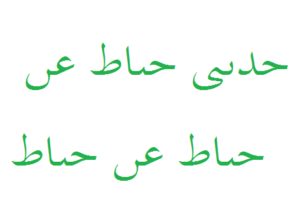If someone feels that he is capable of practicing the Qur’ān and ahādīth without an ustād after having studied a little Arabic or after residing for a while in an Arab country and learning elementary Arabic, or due to him having a very good ability of understanding and reasoning, then he has fallen into deception. This is irrational and foolish. It is imperative to study under the guidance of an ustād. There are so many ahādīth that cannot be understood without an ustād.
For example, it appears in one hadīth that Nabī salallahu alayhi wasallam said, “An excellent person is he who does not possess a flourishing business, unknown to others and engages in ῾ibādat (worship) in seclusion and in the open.” Thereafter the narrator said, “Then Nabi salallahu alayhi wasallam tested the quality of the coin.”
One will be unable to understand the meaning of testing the quality of the coin without professional guidance. The ustād will explain that in the ancient times people used to place the coin between the thumb and middle finger and click their fingers causing the coin to give off a sound, through which the quality of the coin would be understood. In the similar manner, Nabi salallahu alayhi wasallam clicked his fingers, indicating to the speedy departure of this person from the world. Only a few will cry over him and he has a very small estate. (Mishkaat, Vol 2, Pg 442)
 Similarly, in the past there was no tradition of placing nuqtas (dots for the alphabets). The names of several narrators are such that when written without dots they appear identical. For example, one narrator’s name is حَبَّاط – Habbaat. A second narrator’s name is خَيَّاط – Khayyaat and a third narrator’s name is حَنَّاط – Hannaat.
Similarly, in the past there was no tradition of placing nuqtas (dots for the alphabets). The names of several narrators are such that when written without dots they appear identical. For example, one narrator’s name is حَبَّاط – Habbaat. A second narrator’s name is خَيَّاط – Khayyaat and a third narrator’s name is حَنَّاط – Hannaat.
When these names are written without dots, they all appear identical. How will one be able to differentiate between them without the guidance of an ustaad? There are some names that will be confusing even if dots are placed. One narrator’s name is أسِيْد – Aseed. A second narrator’s name is اُسَيْد Usaid and a third narrator’s name is اُسَيَّد – Usayyad. The names seem alike despite the dots being placed and only through the ustād, will one be able to identify the name.
Malfuzaat Mufti Mahmood Hasan Gangohi, Pg. 138